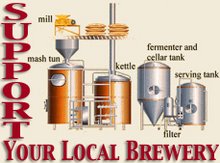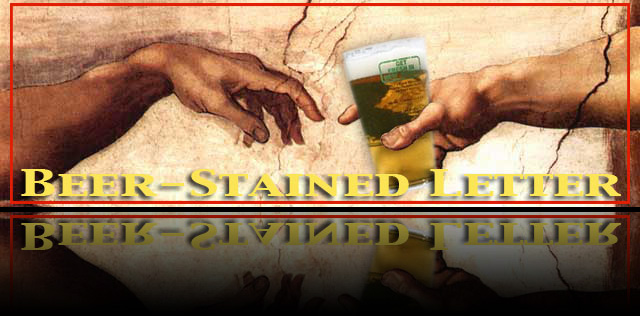Signs of spring, talk of winter
Forget groundhogs as harbingers of spring.
Here's a sure sign that winter will make its scheduled hand-off: a collection of green Post-It notes stuck on the production calendar at High Point Brewing.
The notes read maibock.
Yes, spring is coming. So is that maibock, officially on March 12th at an open house at the brewery in Butler. There are 30 barrels of it fermenting right now, brewed at the end of last week, the headwaters of a planned run of eight 15-barrel batches, already pre-sold to Ramstein draft accounts.
But as much as there is a longing for spring, there's still a reason to talk about winter: High Point saw some firsts with its current versions of Winter Wheat Doppelbock and Ice Storm eisbock, some minor but noteworthy circumstances that illustrate how hot craft beer continues to be nationally and in New Jersey.
For starters, High Point dedicated two 12-barrel batches of its multi-tank run of the winter wheat exclusively for freezing and concentrating into Ice Storm, the Ramstein brew (12% ABV) in the Aventinus vein that has grown from a one-keg experiment eight years ago to a wildly popular beer that's expensive to make, sells out fast and has helped underscore the Ramstein brand. (This should give you an idea of the cost involved with producing Ice Storm: those 24 barrels of winter wheat doppelbock yielded 8 barrels of eisbock after freezing part of the water content and drawing off the remaining concentrated liquid.)
"This year we made more eisbock than we've made in the cumulative amount of time that we've ever made it. For the first time, we actually brewed batches of winter wheat that were dedicated solely to becoming eisbock," High Point founder/owner Greg Zaccardi said last Saturday, a snowy day that saw a steady stream of beer enthusiasts swing by the brewery for sample tastes and to get growler fills.
"This batch that's on now never was served as winter wheat. It was converted to eisbock, and that's a new thing for us. And the reason for that is we had so much demand for it that it made a lot of sense to just focus on it."
Then there's this: High Point bottled only a tiny fraction of the winter wheat doppelbock this year – 10 or 15 cases to have sixpacks on hand during its release open house last year – leaving the lion's share as draft. To be sure, the backbone of High Point's business has been draft beer; the winter seasonal is among only three of High Point's dozen beers that get bottled. But the brewery's tilt toward draft business is growing, and it signed on with Micro-Star keg service last year to ensure an ample supply of half barrels.
"This year the decision to not bottle was essentially (draft) pre-orders," Greg says. "This was the first year we really never did a substantive quantity bottling. Normally we do hundreds of cases.
"We always wanted to be at least 65 percent draft. Since we started with Microstar, we're up to about an 80-20 ratio," Greg says. "The more draft beer we can do, in my opinion, the better it is. It's a 100 percent reusable container; there's a lot less waste in terms of beer spillage going through the bottling line ... the system is set up to have better turnover, better management of draft beer than bottled beer. The consumer has a better chance of getting a very good draft beer than a very good bottled beer."
The draw of seasonal brews can't be ignored, either. Ice Storm is "wow factor" kind of beer, Greg says. "At this point if you really want to make something special and make an impression in the community you have to do something that is wow," he says. It's a situation that seems to steal the thunder from brewers' year-round labels, but you probably won't hear many complaints.
"As a brewer you really want to put all of your energy behind a couple of flagship beers, seasonals being something to mix it up, to accent your core brands," Greg says. "But it's not only me; it seems that Sam Adams and a lot of my contemporaries have a lot of more excitement when it comes to their seasonal releases than their core brands."
But just as seasonals have been helping brewers' bottom line, so have the rising number beer bars in New Jersey and in neighboring states. That's enabled High Point to grow (up 15 percent for the business year that ended last month) in a smaller sales market than it served a dozen years ago. It's also translating into some planned expansion this year, a couple of 30-barrel tanks due to come on line at the end of the spring.
"There's a lot more taps available, a lot more tap space available. There are places that normally wouldn't carry a sixtel of craft beer but have given it a try, and now they have two sixtels that they rotate through, in a place that's a beer and a shot joint," Greg says. "That didn't exist 10 years ago. Even the specialty beer bars these days didn't exist. If they did, what was exotic was Molsen and Bass; it wasn't a local craft."












No comments:
Post a Comment